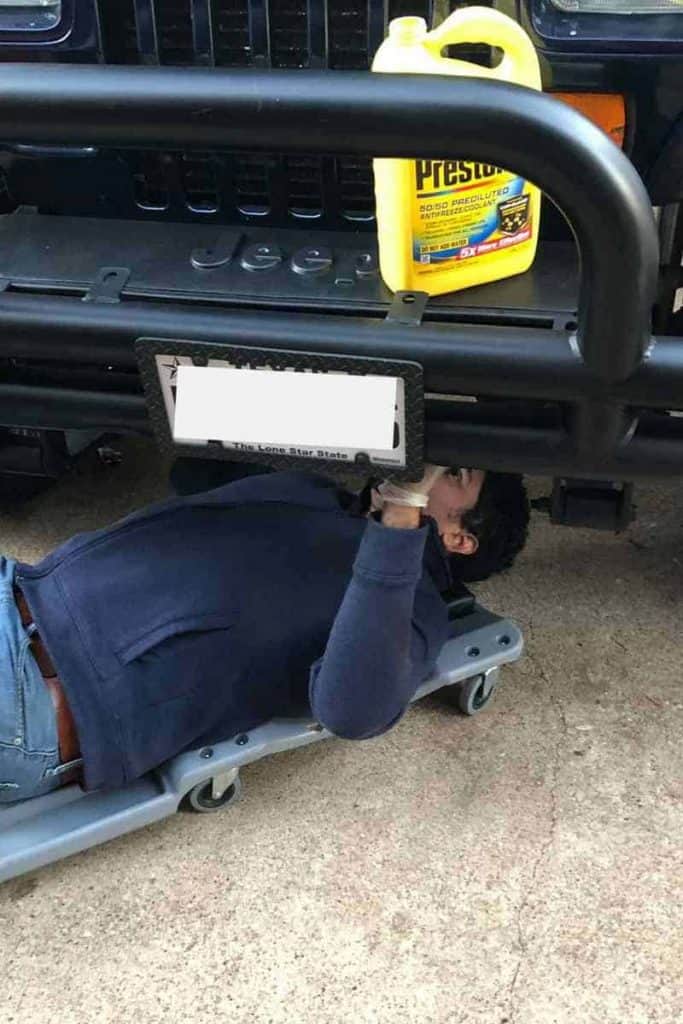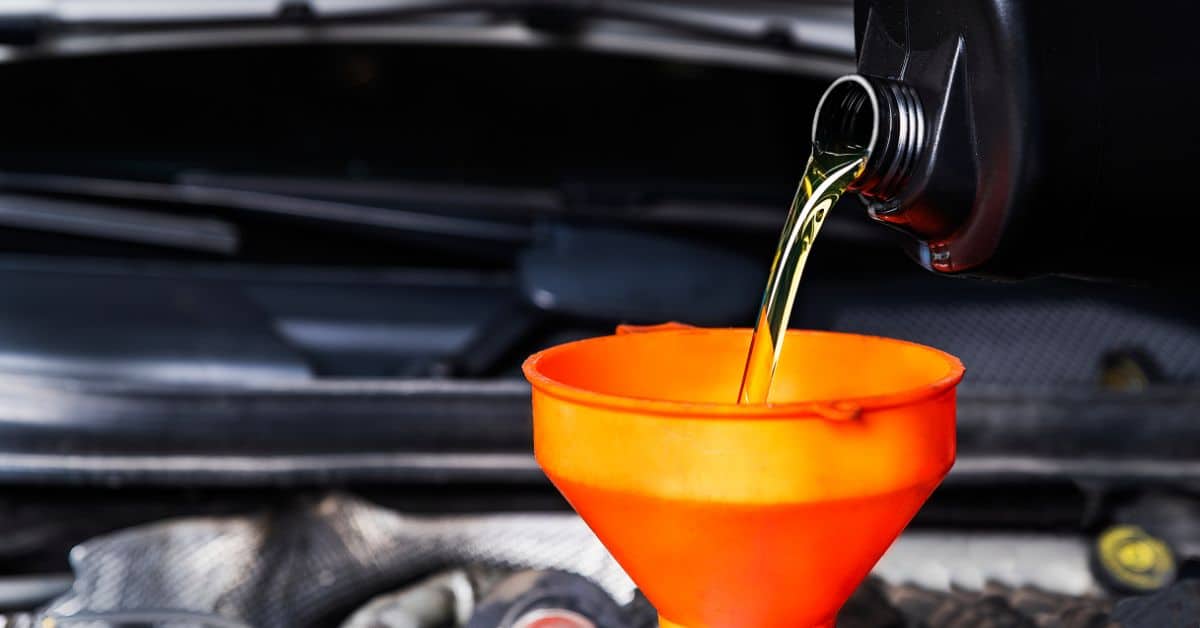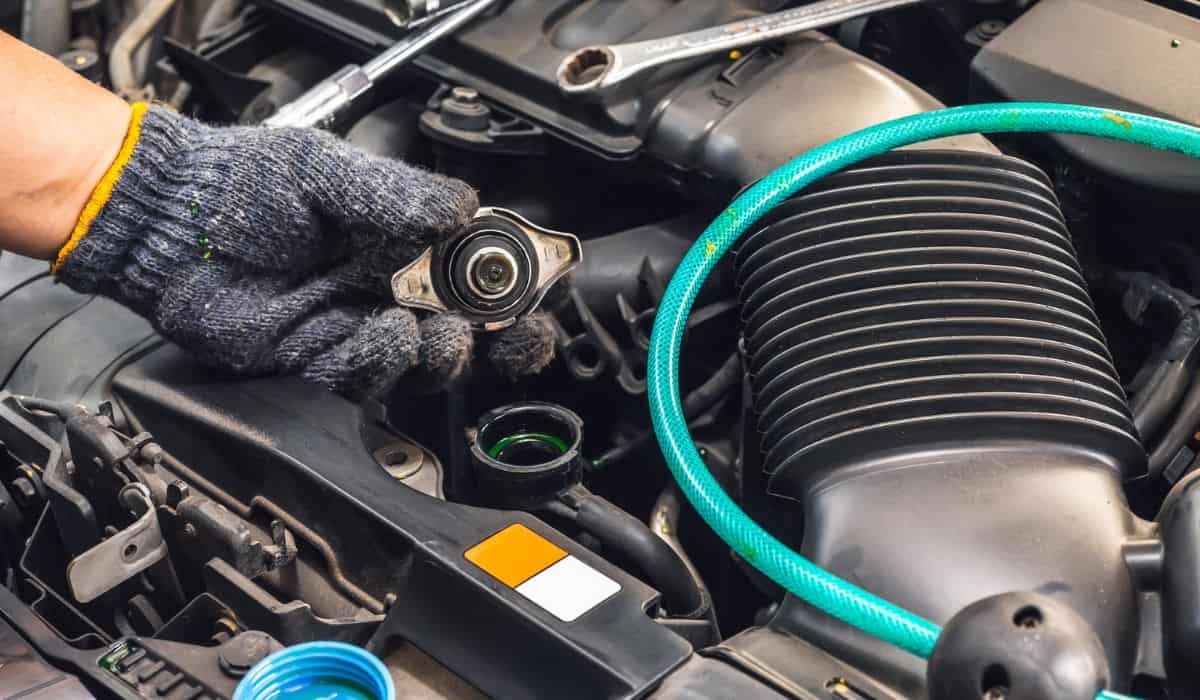10 Reasons Your Jeep Wrangler May Be Overheating (& Fixes)
One of the most common reasons that many Jeep Wrangler owners find themselves heading to the mechanic is that their vehicle is overheating. Unfortunately, there’s not one clear problem that makes a Jeep Wrangler overheat. This means that either you or your mechanic will need to do some investigating to find the exact cause.
The most common issues that cause a Jeep Wrangler to overheat are low coolant levels or a faulty part, such as the cooling system, radiator, thermostat, water pump, heater core, head gasket, or blower motor resistor. In most cases, the problem can be solved by finding and replacing the faulty part.
When it comes to any car problem, the biggest hurdle is often just determining what the issue even is in order to fix it. Let’s go through the 10 most common issues that can cause a Jeep Wrangler to overheat as well as how to fix them so that you can get your Jeep up and running like normal again.
What Are Common Causes of Overheating in a Jeep Wrangler?

Unfortunately, there’s more than one issue that could potentially be causing your Jeep Wrangler to overheat. Let’s go through ten of the most common things that could cause this problem.
1. Faulty Radiator
This cause is one of the simplest ones to understand. If your radiator is failing, then your fans are likely failing as well.
To figure out if this is the problem with your vehicle, begin by looking at your radiator cap. If there’s no pressure coming from the cap, then your Wrangler is likely overheating due to a faulty radiator cap causing your fans to fail. This cap is important as it uses pressure to get coolant into your radiator.
To fix this problem, you simply need to replace your radiator cap. If you don’t see any drops in coolant level once the cap is replaced, the source of your overheating problem is likely elsewhere.

2. Faulty Thermostat
This is another relatively simple potential cause. Just like a regular thermostat, the thermostat in your Wrangler is in charge of reading the temperature of your Jeep’s engine. Once the thermostat detects that your Jeep is overheating, it sends a signal that coolant should be released.
However, if your thermostat is faulty, then this signal for coolant is never given. This leads to your Jeep’s engine reaching extremely high temperatures and overheating.
If your Jeep’s thermostat is faulty, then you simply need to get it fixed or replaced.
3. Faulty Water Pump
The water pump is the part of your Jeep that’s responsible for controlling the flow of coolant in your Jeep’s system. This means that if your Jeep has a faulty water pump, your system likely isn’t getting enough coolant and can be susceptible to overheating.
In a modern Jeep Wrangler, this water pump is likely powered by electricity, so the first thing to do is make sure that it is getting enough electricity. If it is, your water pump may have a leak somewhere. In this case, you’ll likely need to get the part replaced.
4. Low Coolant

In the above potential causes, we saw a few things that could stop your system from delivering the proper amount of coolant. However, the number one thing that can prevent your system from getting enough coolant is if it simply doesn’t have any coolant to deliver!
In this case, the first thing you need to check are your coolant levels. If the levels are fine, check the coolant bottle for any holes that coolant could be leaking from.
Also make sure that you’re using the recommended coolant for your Jeep. It should be listed on the inside of your engine’s cap.
5. Cooling System Airlock
Cooling system airlock is something that happens when your cooling system doesn’t have enough coolant.
Because there isn’t enough coolant, air is pumped through your cooling system, creating air pockets (or airlocks) in your cooling system and hindering the system’s ability to move coolant through the vehicle. This can also be caused by poor pressure levels in the cooling system.
To prevent this during servicing, you will want to “burp” your radiator as you fill it with coolant. You squeeze the large thick hose going from the radiator to the engine. You are forcing the air out and getting the coolant flowing properly from the radiator to the engine. Doing this will prevent air from getting trapped in your cooling system in most cases.
6. Low Airflow
The way coolant works is that it’s a liquid that is spread on the hotter parts of your car and then it cools when exposed to air. This means that if air can’t get to your radiator, your coolant will get to the radiator, but it will remain at a standard temperature rather than cooling it down.
To fix this, make sure your radiator has enough space around it for air to flow. Things that can block this airflow are modifications that block your Jeep’s grill or even leaves and dirt. Moving these should allow for proper airflow to cool down your coolant.
7. Faulty Head Gasket
One of the most common things that can go wrong in your coolant system is a blown head gasket. This will cause coolant to leak into your system, which will lower your coolant levels and cause your system to overheat.
All you have to do to fix this is replace the head gasket. Do this as soon as possible as a blown head gasket can cause serious damage if it’s not fixed as soon as possible.
8. Low Oil Levels
This is one of the less common things that can cause overheating problems on your Jeep Wrangler, but it’s still entirely possible that this is the cause of your Jeep’s problems.
Motor oil lubes up your engine’s components in order to minimize friction. However, if your Jeep doesn’t have enough oil, then your motors parts will be rubbing against each other and generating massive amounts of heat.
To determine if this is the problem, all you have to do is check your oil levels. This should be something you check regularly anyways as driving in any vehicle without the proper amount of oil can cause serious damage to the engine.

9. Dysfunctional Heater Core
A dysfunctional heater core alone is more likely to cause issues with your car’s air conditioning rather than overheating in the engine.
However, combined with one of the problems listed above, a dysfunctional heater core could be the thing that pushes your Jeep’s engine over the edge into overheating territory.
To fix this, first make sure that any old or stale coolant is removed from your system by performing a heater core flush. If that doesn’t work, you may need to replace your heater core.
10. Faulty Blower Motor Resistor
A faulty blower motor resistor is another common issue that can cause your Jeep to overheat. This is one of the easiest problems to identify as well.
If your blower motor resistor is failing, you’ll likely hear strange noises coming from the blower, a burning smell will likely be coming from your air vents, and you’ll feel no air from those same vents.
To fix this issue, you may need to replace your blower motor, but first make sure to change your air filters. You should also inspect the fan belt if your Jeep has one and make sure it’s not snapped or trapped on something.
How to Prevent Your Jeep Wrangler From Overheating

The most common issue that can cause a Jeep Wrangler (or any car for that matter) to overheat is some sort of coolant leak. This shouldn’t come as a surprise since preventing the vehicle from overheating is the coolant’s job.
So, make sure to check your coolant levels regularly. If your coolant levels are dropping rapidly, there’s likely a leak somewhere in your coolant system that needs to be repaired.
The second most common issue that causes Jeep Wranglers to overheat is a fault in the radiator fan. To fix this problem, get a mechanic to inspect your radiator fan. In the worst case scenario, you may need to replace the fan entirely.
